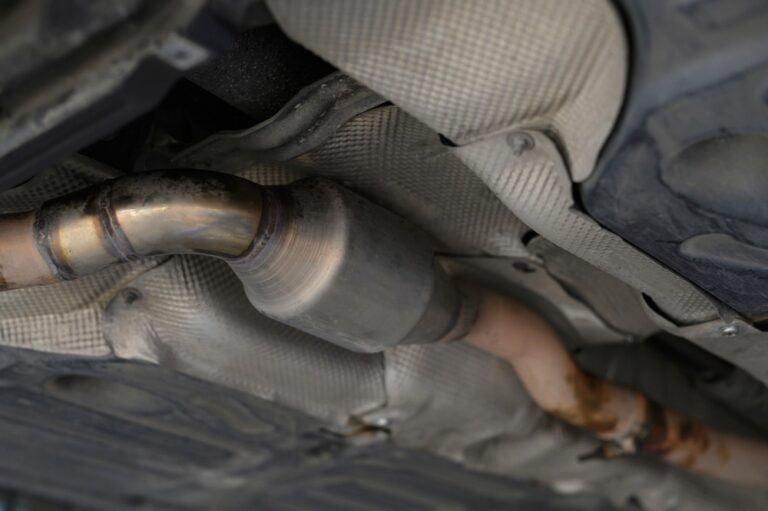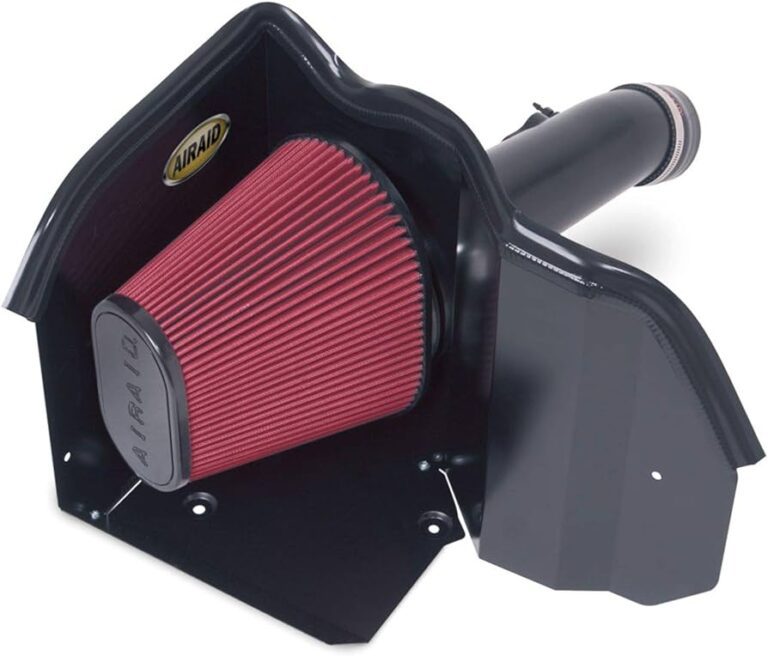Where is the Exhaust Manifold on a Car: Uncovering its Hidden Location
The exhaust manifold on a car is typically located between the engine and the exhaust system. It collects the exhaust gases from the engine cylinders and directs them towards the exhaust pipe.
This component plays a crucial role in the exhaust system as it helps to expel harmful gases and control the emissions produced by the engine. Additionally, the exhaust manifold also helps to increase the engine’s performance by improving exhaust flow.
By optimizing the flow of exhaust gases, the manifold can enhance the engine’s power output. Moreover, it is often made of cast iron or stainless steel to withstand the high temperatures and pressures generated by the engine.
Understanding The Function Of The Exhaust Manifold
The exhaust manifold is an important component of a car’s exhaust system. It plays a crucial role in optimizing engine performance by efficiently channeling exhaust gases away from the engine.
When the combustion process occurs within the engine, it produces gases that need to be expelled. The exhaust manifold collects these gases from the engine cylinders and directs them towards the exhaust pipe. By doing this, it ensures that the gases exit the engine smoothly and quickly.
One of the key functions of the exhaust manifold is to merge the separate exhaust gases from each cylinder into a single stream. This merging helps in balancing the flow of gases and improves the overall efficiency of the engine.
The exhaust manifold also helps in reducing back pressure within the engine. By efficiently removing exhaust gases, it prevents the gases from flowing back into the cylinders. This helps the engine perform better and enhances fuel efficiency.
In conclusion, the exhaust manifold is an essential component of a car’s exhaust system. It allows for the effective removal of exhaust gases, optimizing engine performance and contributing to overall efficiency.
Identifying The Exhaust Manifold’s Location On A Car
In most car models, the exhaust manifold is located near the engine’s cylinder head. Its position can vary depending on the engine layout. Let’s explore the different engine layouts and their impact on the exhaust manifold’s position. Inline engines have all cylinders arranged in a straight line. In this configuration, the exhaust manifold is usually found on one side of the engine, either on the left or right. V-shaped engines have cylinders arranged in a V shape. The exhaust manifold is typically positioned in the V area between the two banks of cylinders. Flat or horizontally opposed engines have cylinders located on opposite sides of the engine, facing horizontally. The exhaust manifold is usually positioned beneath the engine, running along the length of the car. When it comes to specific car makes and models, the exhaust manifold’s location can vary. Some cars may have the manifold on the front or back, while others may have it on the left or right side. Factors such as engine design, space constraints, and exhaust system layout influence the placement of the exhaust manifold in a car’s engine bay. Manufacturers carefully consider these factors to optimize the engine’s performance and efficiency. Overall, the exhaust manifold’s location on a car depends on the specific engine layout and other design considerations.Locating The Exhaust Manifold: A Step-by-step Guide
htmlTo locate the exhaust manifold on your car, you will need a few tools. These include a socket wrench set, penetrating oil, a flashlight, and safety gloves. Once you have gathered the necessary tools, you can begin the process of finding the exhaust manifold.
Step 1: Tools Required For Locating The Exhaust Manifold
| Socket wrench set | Penetrating oil | Flashlight | Safety gloves |
Step 2: Identifying The Primary Components Surrounding The Exhaust Manifold
The exhaust manifold is typically located near the engine block and is connected to the cylinder head. It is important to familiarize yourself with the general layout of your car’s engine and identify the components that are likely to be near the exhaust manifold. These may include the intake manifold, catalytic converter, and oxygen sensors.
Step 3: Tracing The Exhaust Pipes To Find The Exhaust Manifold’s Exact Location
To trace the exhaust pipes and locate the exact position of the exhaust manifold, you may need to get under the car. Use the flashlight to inspect the pipes and follow them from the engine towards the rear of the vehicle. The exhaust pipes will lead you to the exhaust manifold, which is usually bolted to the cylinder head.

Credit: www.fastspecialties.com
The Challenges Of Accessing And Maintaining The Exhaust Manifold
htmlThe Challenges of Accessing and Maintaining the Exhaust Manifold
Modern car models can present difficulties when it comes to accessing and maintaining the exhaust manifold. Due to their location within the engine compartment, some vehicles may require extra effort and specific techniques to reach the exhaust manifold effectively. This can prove to be particularly daunting for DIY enthusiasts or mechanics who are unfamiliar with the car’s specific design.
| Difficulties associated with reaching the exhaust manifold in some car models | Tips and tricks for easier access to the exhaust manifold during maintenance or repairs | Importance of regular inspection and maintenance to prevent exhaust manifold issues |
|---|---|---|
|
|
|
Regular inspection and maintenance of the exhaust manifold is vital to ensure its proper function and prevent more serious problems from occurring. By addressing any issues promptly, you can avoid costly repairs or replacement of the exhaust manifold.
Frequently Asked Questions On Where Is The Exhaust Manifold On A Car
How Do You Know If Your Exhaust Manifold Is Bad?
If your exhaust manifold is bad, you may notice symptoms like loud noises, decreased engine performance, excessive smoke, or a strong smell of exhaust fumes. Additionally, you may experience a drop in fuel efficiency and an illuminated check engine light.
Regular inspections and maintenance can help detect and address any issues with your exhaust manifold.
Is It Ok To Drive With Bad Exhaust Manifold?
Driving with a bad exhaust manifold is not recommended. It can lead to increased emissions, reduced fuel efficiency, and potentially engine damage. It’s best to address the issue promptly to ensure proper functioning of your vehicle and to comply with environmental regulations.
How Do I Know If My Exhaust Manifold Is Leaking?
To check for a leaking exhaust manifold, look for visible signs like black soot around the manifold, a strong smell of exhaust fumes, or a loud hissing or popping noise. You may also notice a decrease in engine performance or increased fuel consumption.
Don’t forget to check for any leaks with a visual inspection or by taking your vehicle to a mechanic.
How Much Does It Cost To Repair An Exhaust Manifold?
The cost of repairing an exhaust manifold varies depending on the make and model of the vehicle and the extent of the damage. On average, expect to pay around $300 to $500 for the repairs.
Conclusion
The exhaust manifold plays a crucial role in a car’s exhaust system, collecting and funneling the gases away from the engine. Understanding its location and function is essential for car owners. By knowing where the exhaust manifold is located, you can recognize any potential issues and address them promptly.
Regular maintenance and inspection of the exhaust manifold can help ensure the proper functioning and longevity of your car’s engine. Stay informed about your vehicle’s components, and you’ll be better equipped to keep it running smoothly.






